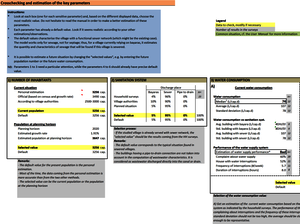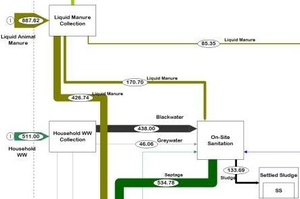Department Sanitation, Water and Solid Waste for Development
ESRISS: Egyptian-Swiss Research on Innovations in Sustainable Sanitation
ESRISS is a Swiss State Secretariat for Economic Affairs (SECO) funded research project at Sandec that deals with the sanitation planning gap in Nile Delta villages which cannot be connected to large centralised treatment plants. The five-year research project (Mai 2010 - April 2015), in partnership with the Egyptian Holding Company for Water and Wastewater (HCWW), aims at developing decision-making tools and strategies for the wide-scale replication of small-scale sanitation systems. As a parallel research component of the Integrated Sanitation & Sewerage Infrastructure Project (ISSIP), launched by the Government of Egypt in cooperation with the World Bank, it complements the establishment of centralised treatment plants in three Governorates of the Nile Delta region. ESRISS is coordinated by Philippe Reymond, who is based in Cairo.
The objective of ESRISS is to address the following research questions:
- What are the challenges and success factors of past decentralised sanitation approaches in the Egyptian context, and why?
- What technologies and/or combinations of technologies are the most appropriate for the Nile Delta region given the land use, water or wastewater usage and local environmental factors, and how do these affect nutrient recycling and resource recovery?
- What key features in the enabling environment are necessary to scale up small-scale sanitation in the Nile Delta? What are the ways forward?
- How economically viable is a decentralised treatment system compared to a traditional centralised system in terms of capital, operation and maintenance costs?
Policy recommendations to scale-up
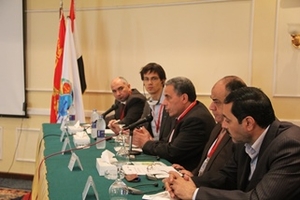
The ESRISS Project final report:
Policy Recommendations for the Scaling-Up of Small-Scale Sanitation in Egypt
Small-scale sanitation challenges and ways forward
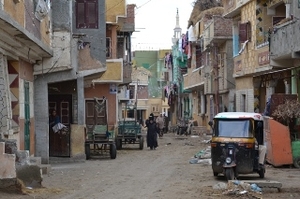
The ESRISS Project investigated existing small-scale sanitation initiatives and the current “enabling environment” in Egypt. After numerous interviews with key sanitation stakeholders and field visits, small-scale sanitation challenges were identified and ways forward recommended.
- Report: “Small-Scale Sanitation in Egypt: Challenges and Ways Forward” (executive summary in Arabic).
- Addendum: Factsheets of small-scale sanitation initiatives in Egypt
- Research for Policy Brief: “Small-Scale Sanitation in Egypt: 10 Points to Move Forward” English/Arabic
Assessment tool for existing small-scale sanitation initiatives:
Useful link:
- Identifying and creating an enabling environment as presented in the Community-Led Urban Environmental Sanitation Planning Guidelines (CLUES)
Baseline data and current practices in the Nile Delta
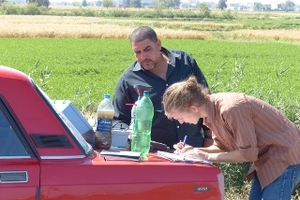
The lack of baseline data and design parameters characterising rural wastewater in the Nile Delta has hindered the development of sound sanitation strategies in settlements under 5,000 inhabitants.
The ESRISS Project developed a first baseline data set, based on the following objectives: (1) Gather all the information available and reference it in one report; (2) Complete the data set with one’s own analysis of sewage, septage and animal manure samples; (3) Describe the current sanitation practices in Nile Delta villages, including household-level behaviours and bayara emptying activity; (4) Understand the factors influencing wastewater quantities and characteristics; (5) Describe the existing water and nutrient reuse practices; and (6) Quantify the sanitation-related financial flows in the current scenario.
- Report: “Small-Scale Sanitation in the Nile Delta: Baseline Data and Current Practices” 2nd edition, incl. executive summary in Arabic.
- Data sets
- Table summarizing the data of the villages that were studied
- KMZ file that visualises the locations of the villages in Google Earth
Data collection tools:
- Semi-structured interview guidelines developed for:
- Village authorities and representatives (omdas, sheikhs al balad)
- Bayara (cesspit) emptiers (i.e., faecal sludge service providers)
- Farmers
- Owners of non-residential buildings
Sample analysis:
Useful link:
Planning tool to estimate the wastewater quantity and characteristics at village-level
The tool package serves for the preliminary assessment of the situation in small settlements and the estimation of the characteristics and quantities of the wastewater to be treated and, thus, for the determination of the design parameters for a future treatment plant. It consists of data collection tools and an Excel-based model.
The model is based on the ESRISS data baseline and a simplified material flow analysis (MFA) model. The tool allows to compare sanitation system scenarios, in the present as in the future, as well as estimate the nutrient content (nitrogen and phosphorus) in the perspective of an optimal wastewater and nutrient reuse. The user can thus anticipate the impact of different measures.
-
User manual [1 MB]
-
Short 5-page step-by-step procedure [175 KB]
Material flow analysis and comparison of scenarios
The sanitation-related flows in Nile Delta villages have been modelled using a material flow analysis (MFA) approach. It allows the comparison of different sanitation systems and nutrient management scenarios like the centralised management of liquid animal manure and the separation of the blackwater and greywater.
-
Model in Excel format [64 KB]
Useful links:
Financial analysis

This report looks at the financial side of rural sanitation in Egypt. It looks at the costs of the current systems for the population – onsite systems, septage emptying, informal sewer networks, drinking water – as well as the costs of small-scale wastewater collection and treatment systems. It analyses the cost-effectiveness factors that could lead to cheaper rural sanitation systems. In particular, it focuses on the costs and benefits of small-scale sanitation systems and the potential economies of scale if implemented in big numbers, and compares it with large-scale centralised systems.
Report: “Small-Scale Sanitation in the Nile delta: Analysis of Costs and Cost-Effectiveness”
Contact at HCWW
Prof.Dr. Rifaat Abdel Wahaab
(General Manager R&D)
rifaat.abdelwahaab@
hcww.com.eg
+20 2 245 83590 (fix)
ESRISS Documents & News
-
ESRISS Final Policy Report [6 MB]
-
ESRISS Planning Tool [1 MB]
-
Article Sandec News 2016 [171 KB]
-
Article Sandec News 2015 [127 KB]
-
MFA Report [5 MB]
-
Article Sandec News 2014 [127 KB]
-
ESRISS 10 Points Policy Paper [661 KB]
-
Article Sandec News 2013 [495 KB]
-
Article Sandec News 2012 [376 KB]
-
Article Sandec News 2011 [97 KB]
-
Project Flyer in English [109 KB]
-
Project Flyer in Arabic [209 KB]
-
Inception Phase Executive Summary [130 KB]

